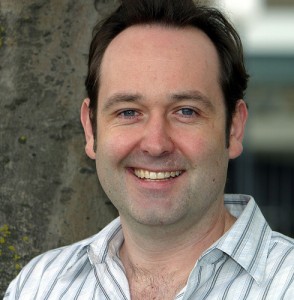 By Martin O’Hanlon
By Martin O’Hanlon
CWA Canada Director
I’m going to make a bold prediction for 2014: the tide will finally begin to turn.
It will turn for newspapers, which have been through the worst and will begin to see revenues climb again.
It will turn for the Harper government (it already has really) which has been attacking labour, the CBC, and many other progressive voices in Canada.
And most importantly, it will turn for economic inequality, which has become the biggest threat to this country’s future.
By noon on Jan. 2, each of Canada’s top-paid CEO’s had earned as much money in 2014 as the average Canadian worker will make all year.
I don’t begrudge a CEO, or anyone else, a big paycheque. But it is fundamentally unfair – not to mention bad for the economy and society – for companies to pay those big salaries and rake in huge profits when they don’t pay their workers a decent wage.
It angers me when Postmedia cuts hundreds of jobs and insists that it can’t give workers a raise, and then increases its CEO pay by a whopping 50%, to $1.7 million.
More importantly, it angers the majority of Canadians, who have an innate sense of what’s fair.
As 2014 dawns, ordinary people are finally realizing that there are fewer and fewer decent-paying jobs out there – the jobs that built this country.
Many young people are realizing that they may never be able to have that white picket fence. And many parents realize that their children don’t have the opportunity they had.
People are realizing that our political and financial system overwhelmingly favours big companies and the rich, and they see it for what it is: injustice.
It’s vital now that we in the labour movement show Canadians that we all share the same core values and that we are the only ones standing up for the Middle Class.
We have to build a movement, and that means working with other progressives, whether it’s community organizations, social groups, student activists, environmentalists, religious leaders – anyone with whom we can find a common interest.
The Canadian Labour Congress, to which we at CWA Canada belong, is attempting to do just that with its “Fairness Works” campaign. (Please visit:fairnessworks.ca)
The campaign aims to engage millions of union members in conversations about how unions have improved their lives – and share their stories with Canadians to help build a united movement for social justice.
And that’s where each of us has to play a part in 2014.
I am asking each of you – every member of CWA Canada – to commit to doing just one thing this year for the common good.
It could be talking to a fellow worker, especially a younger one, about getting involved in the union. It might be posting about social/economic justice issues on Facebook, volunteering to do something for your Local, telling friends about the good the union does, donating to a cause – whatever.
One person and one act at a time, working together, we can make a difference.
Let’s each do our part to protect quality jobs, defend quality journalism, improve wages, grow our union – and make Canada a better place.
Fairness works. Let’s fight the good fight together!



